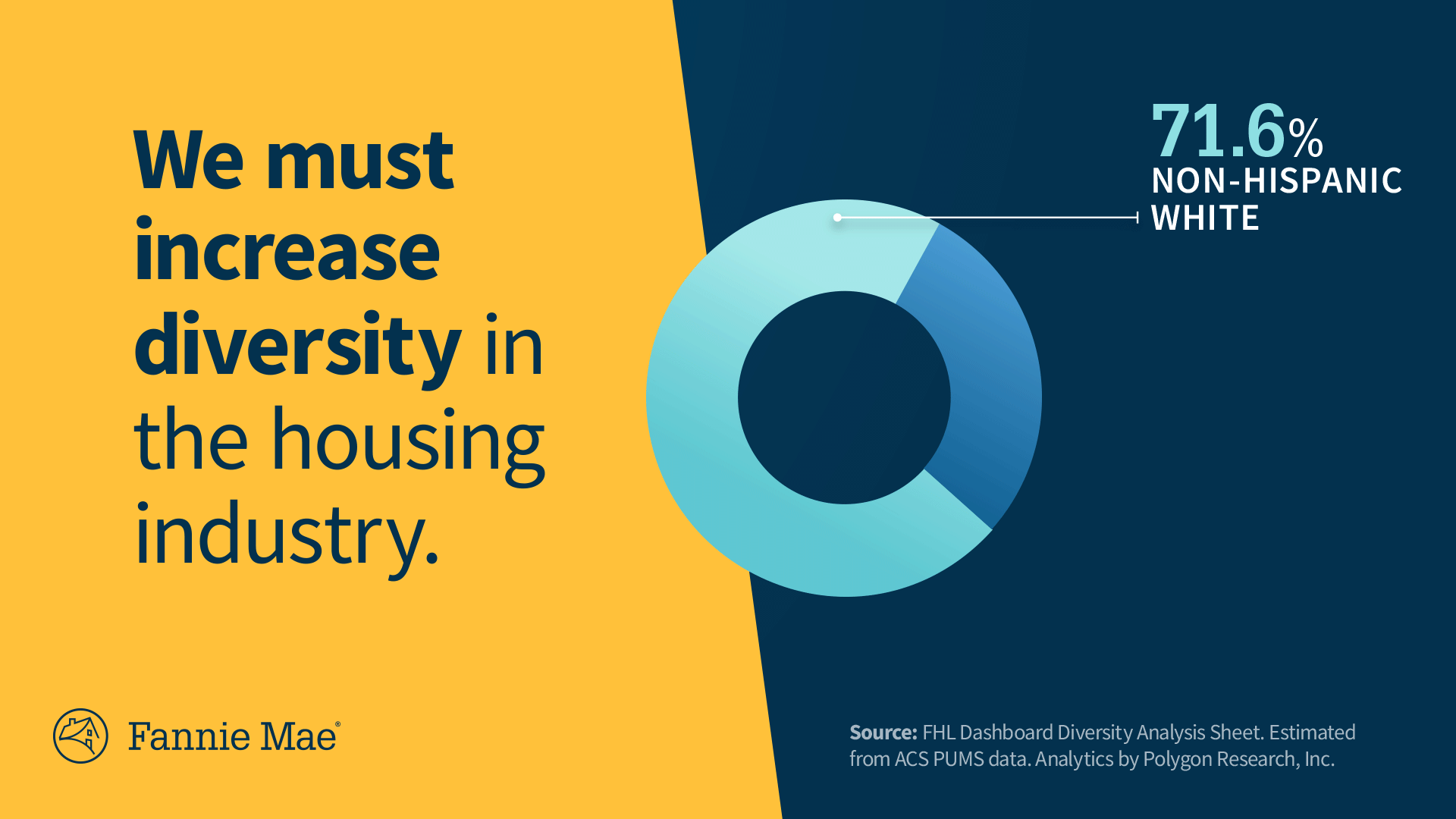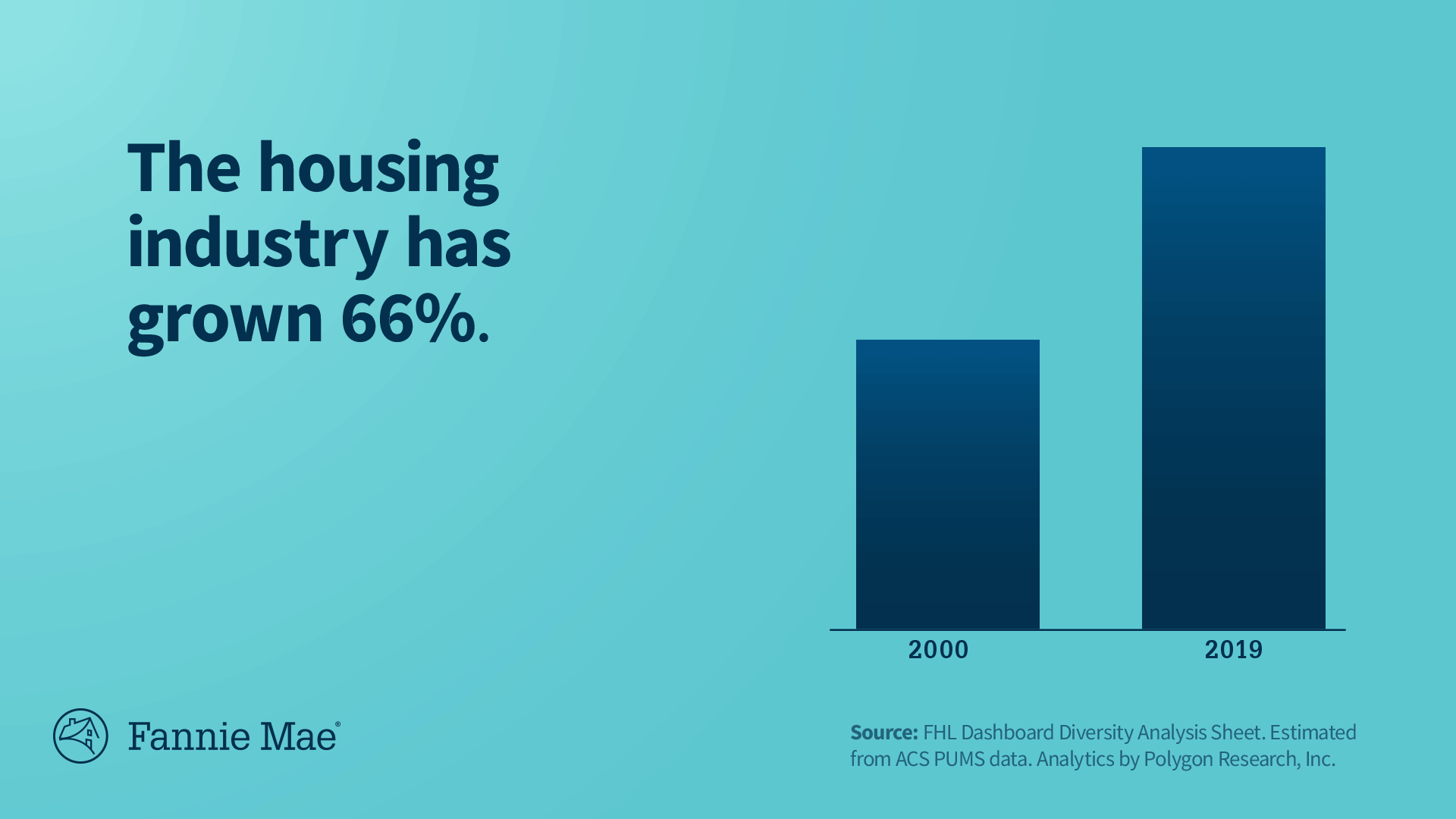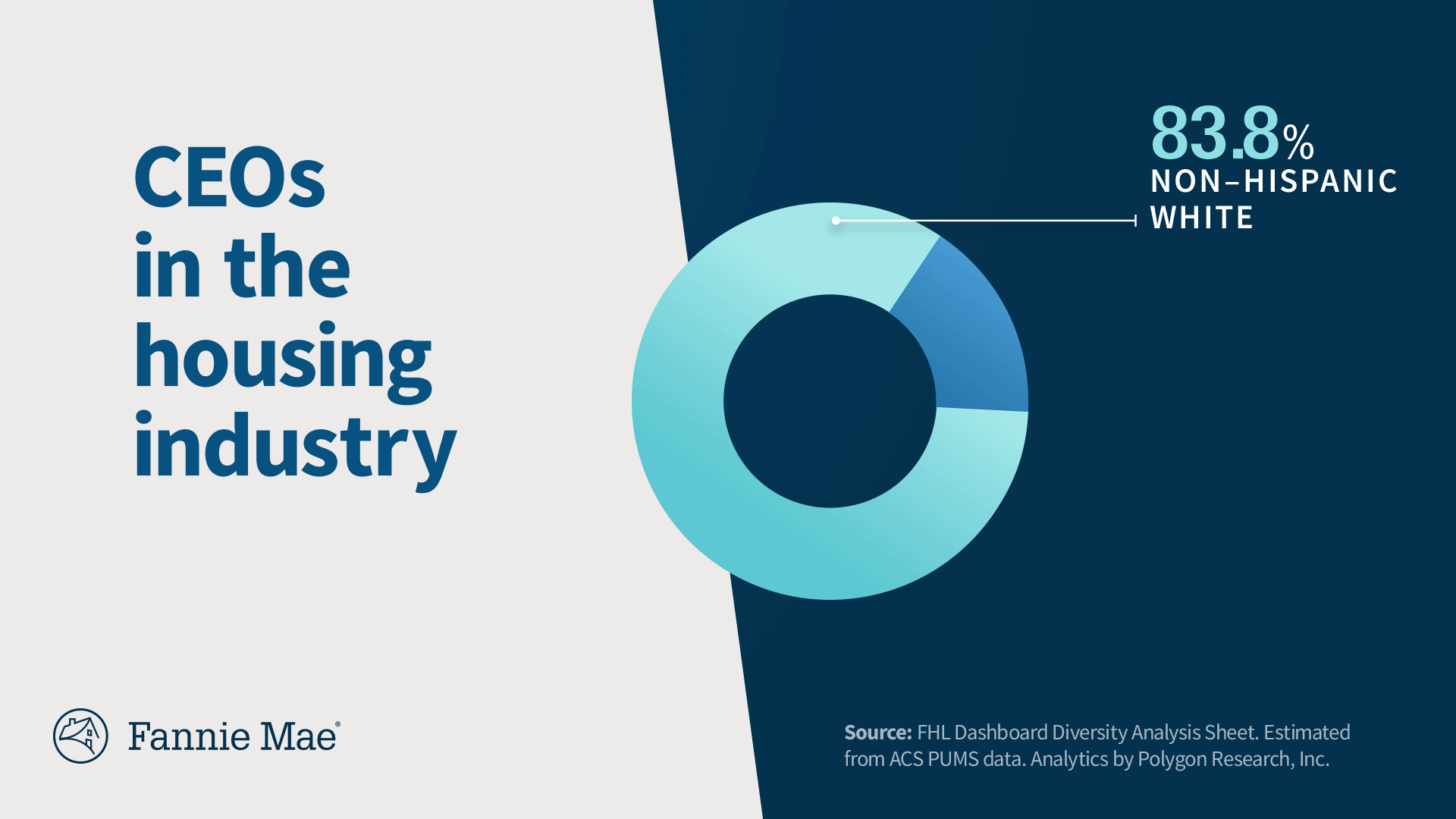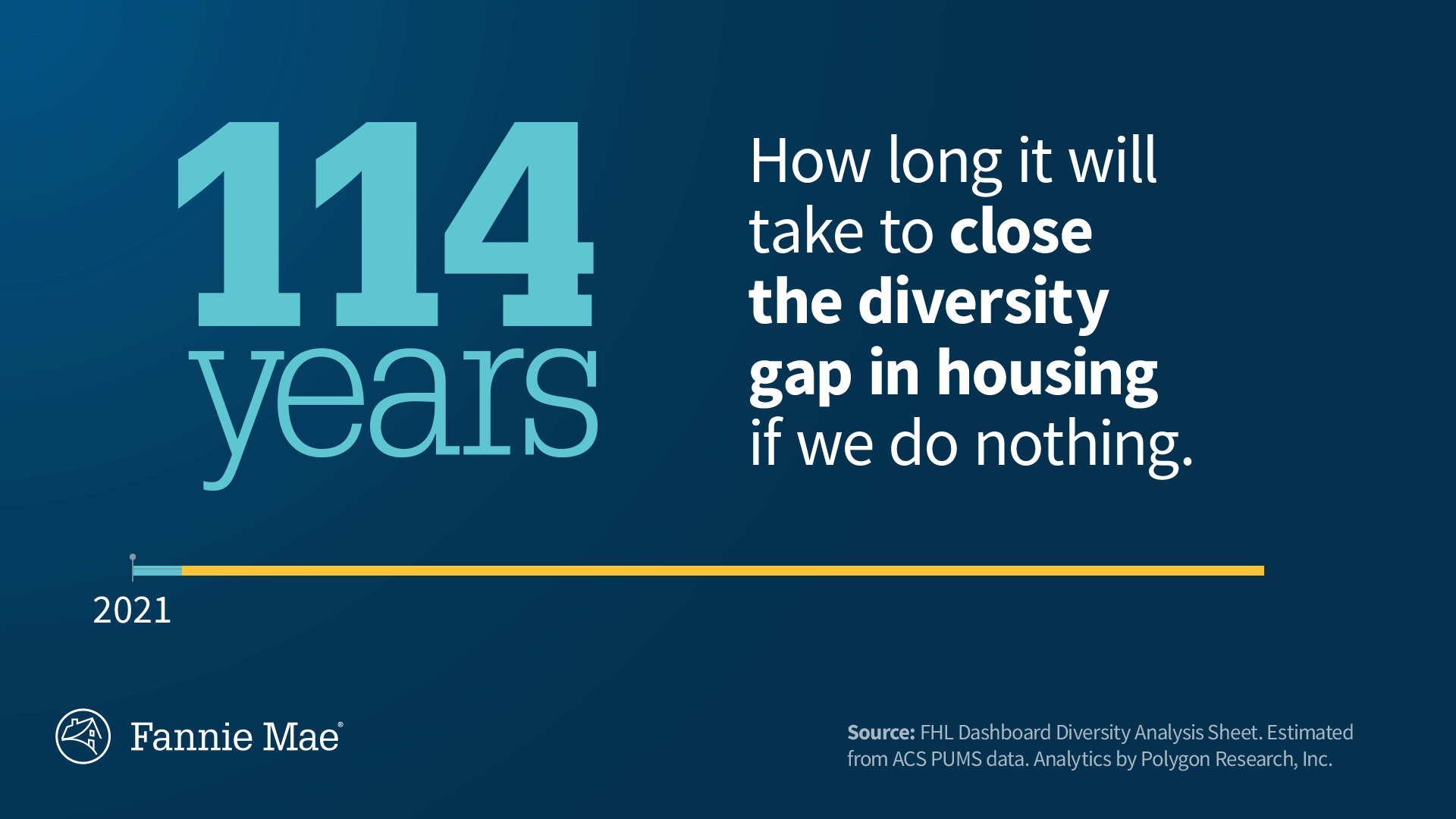We Can’t Wait 114 Years to Close the Diversity Gap in Housing
Over the past year, social unrest and the pandemic have cast a glaring spotlight on the persistence of systemic racial and socioeconomic inequity, including the widening wage gap between White and People of Color households. For most of America, sustainable homeownership has been a main driver of generational wealth accumulation. However, laws mandating segregation, and policies and practices such as redlining, which prevented Black homebuyers from accessing credit for home and business mortgages, created inequitable access to homeownership and the financial rewards accompanying it. As a result, we must take action to address an enduring legacy of societal ills:
- Currently, the rate of Black homeownership is 29 percentage points lower than for White households. (U.S. Census Bureau)
- In 2016, the median wealth of White households ($162,800) was ten times higher than Black households ($16,300), and eight times higher than Hispanic households ($21,400), which is partially attributable to historically lower homeownership rates among these groups. (Joint Center for Housing Studies of Harvard University)
- By 2040, homeownership rates are projected to decline for everyone, but it is projected to be most pronounced among Black households. (Urban Institute)
While the country is rapidly becoming more diverse, the housing industry is not. And it is imperative that the industry reflect the country it serves to more effectively address the inequities that have disadvantaged far too many. According to statistics compiled by the Brookings Institute, as of 2019, Whites, Hispanic or Latino, Blacks, and Asian Americans currently represent 60.1%, 18.5%, 12.5%, and 5.9% of the U.S. population, respectively. In comparison, our industry is 71.6% White, while Hispanic or Latino, Blacks, and Asian Americans represent 9.1%, 7.5%, and 9.4%, respectively.
From 2000-2019, the housing industry workforce increased by 66%, yet the representation of Hispanic or Latino and Blacks only increased by 5% and 1.98%, respectively.
During the same 19-year period, Hispanic or Latino CEO representation in the housing industry increased by 4.15% and Black CEO representation edged up by just 0.34%.
If the housing industry falls victim to what Dr. Martin Luther King Jr. once described as the "tranquilizing drug of gradualism," it will take 114 years for the industry to mirror the diversity of our nation. Consequently, doing nothing is not an option.
So how do we respond to a challenge that could take more than a lifetime to fix? First, we must acknowledge that the status quo is unacceptable and second, we must act with intentionality.
In 2018, Fannie Mae created Future Housing Leaders (FHL) to use its position in the housing ecosystem by rallying its customers in a concerted effort to diversify the housing industry. Future Housing Leaders connects college students to paid summer internships and early career opportunities in the housing industry, with an emphasis on recruiting where historically underrepresented groups can be made aware of these opportunities. Future Housing Leaders partners with the Hispanic Association of Colleges and Universities and Management Leadership for Tomorrow (MLT) for assistance in recruiting at institutions with significant racial and ethnic diversity. In turn, Future Housing Leaders provides students with resources to better understand the housing industry and with tools and trainings to help them with on-the-job readiness. To further position Future Housing Leaders participants for success, they also receive access to a free curriculum offered by Fannie Mae University and resources from the Mortgage Bankers Association to deepen their industry knowledge.
It is daunting to take on a representation gap so huge that it would take over a century to close without intervention. By joining Future Housing Leaders, companies in the housing industry can leverage the program as an additional tool to diversify their organizations. While this undertaking is not an easy feat, it is exciting to tackle this challenge with steadfast partners who share Fannie Mae’s commitment to promoting diversity, equity, and inclusion. If we succeed, our efforts will have a resounding impact on the housing industry, homebuyers and renters, and the careers of Future Housing Leaders participants. Your involvement in Future Housing Leaders is not only the right thing to do, it’s the smart thing to do.
Kenneth Imo, Vice President, Office of Minority & Women Inclusion
March 10, 2021





